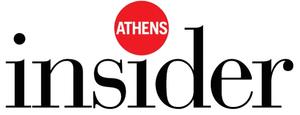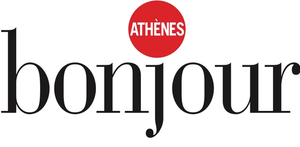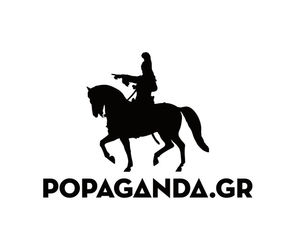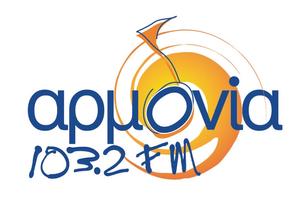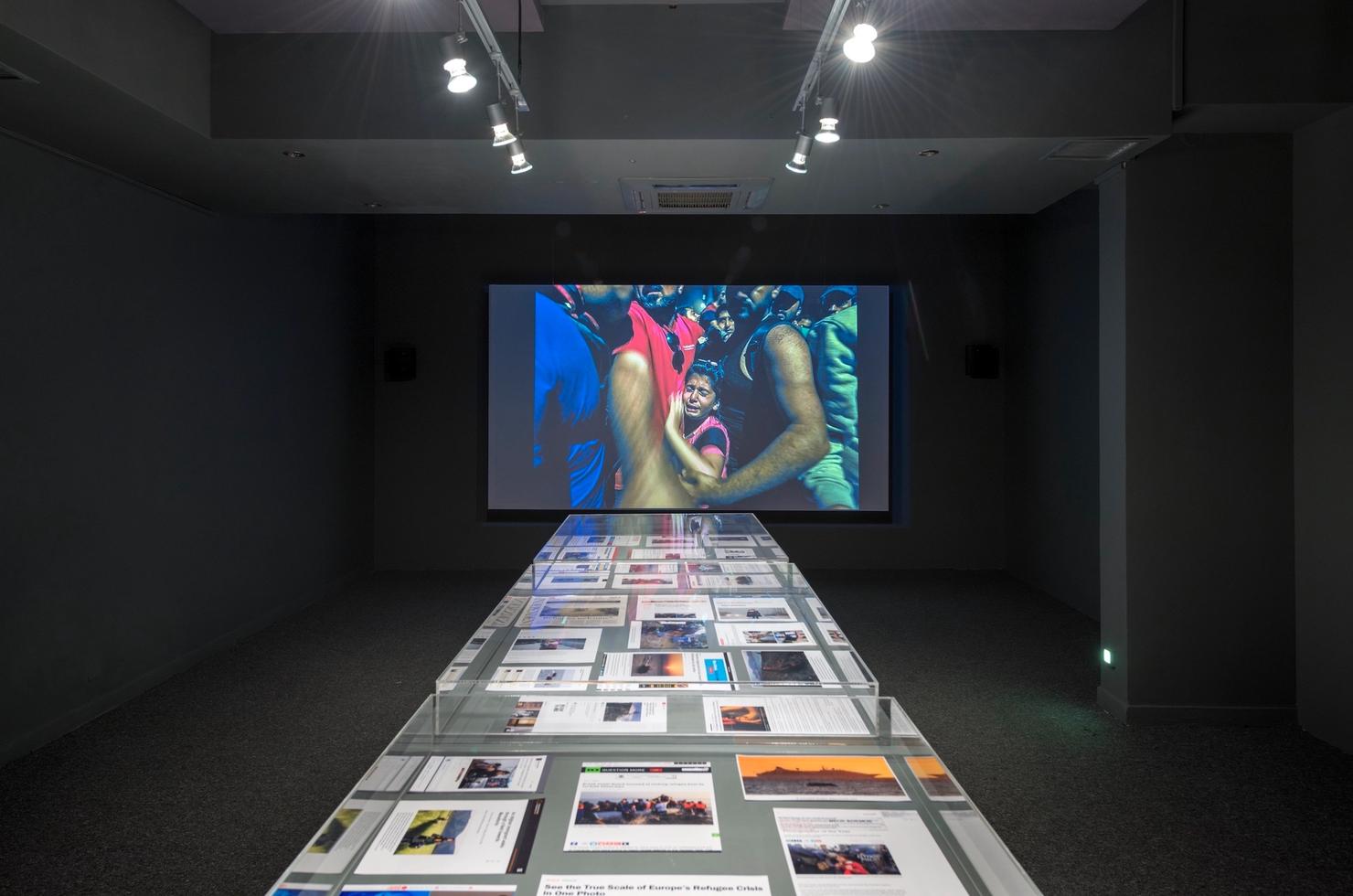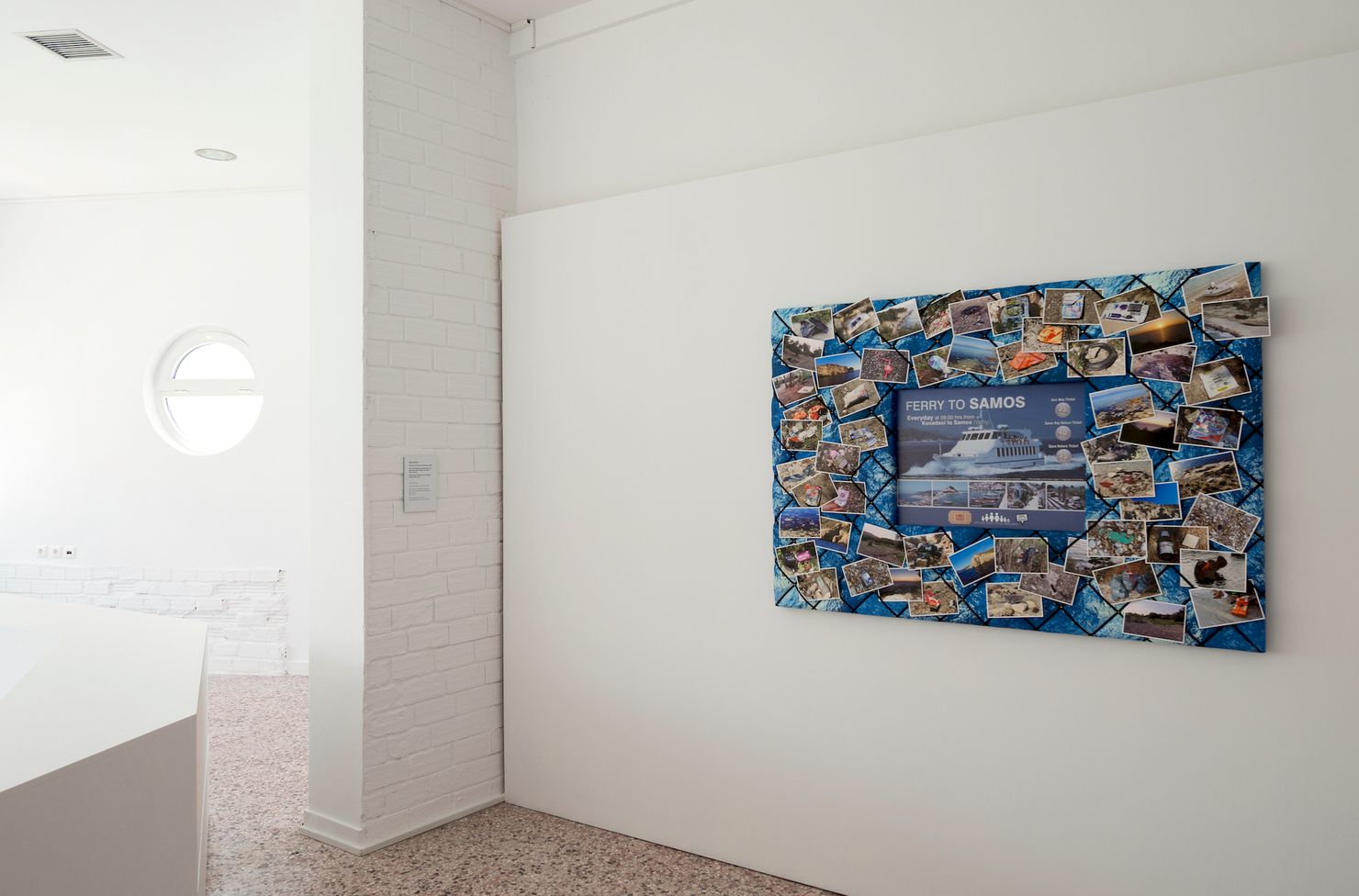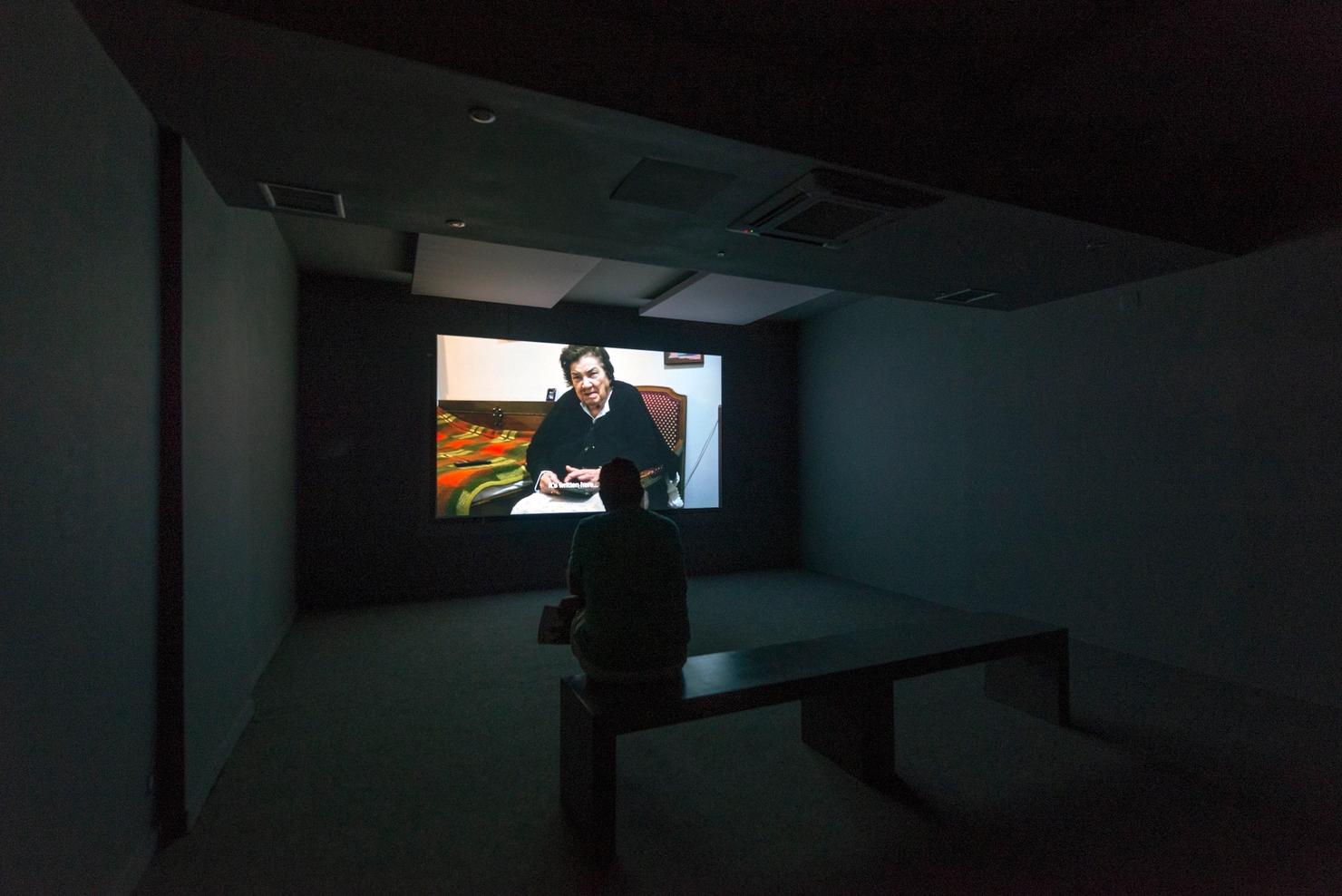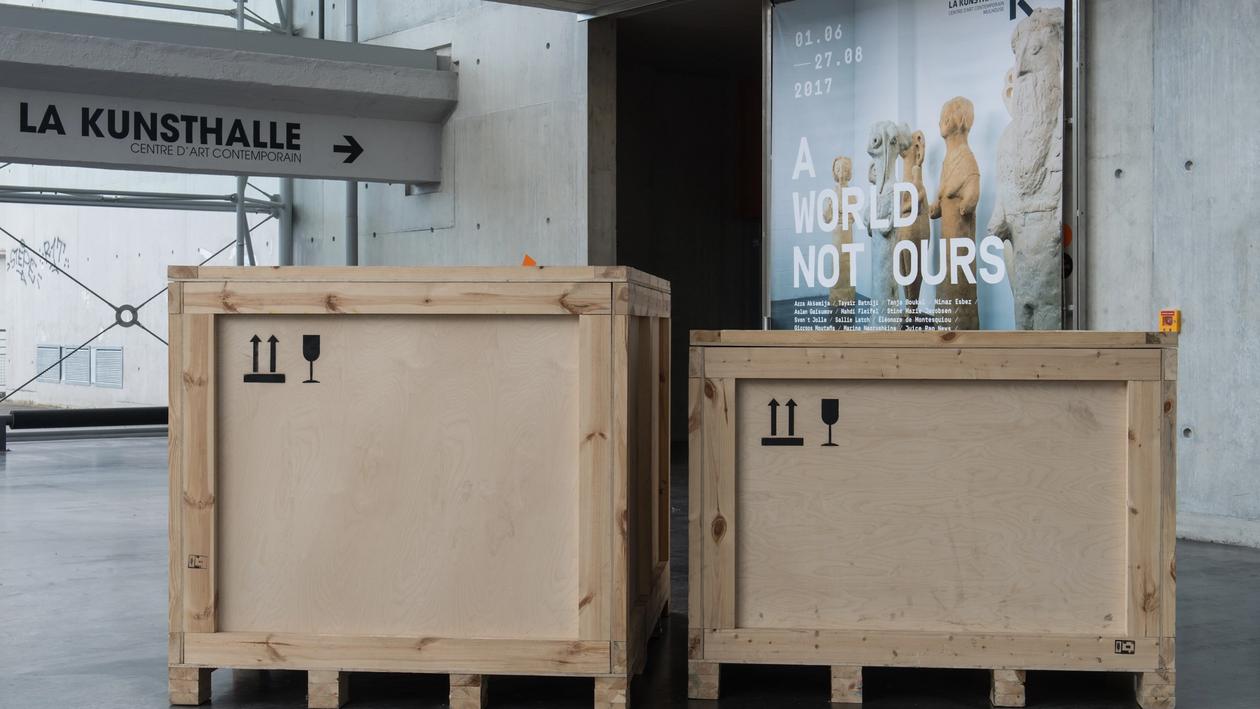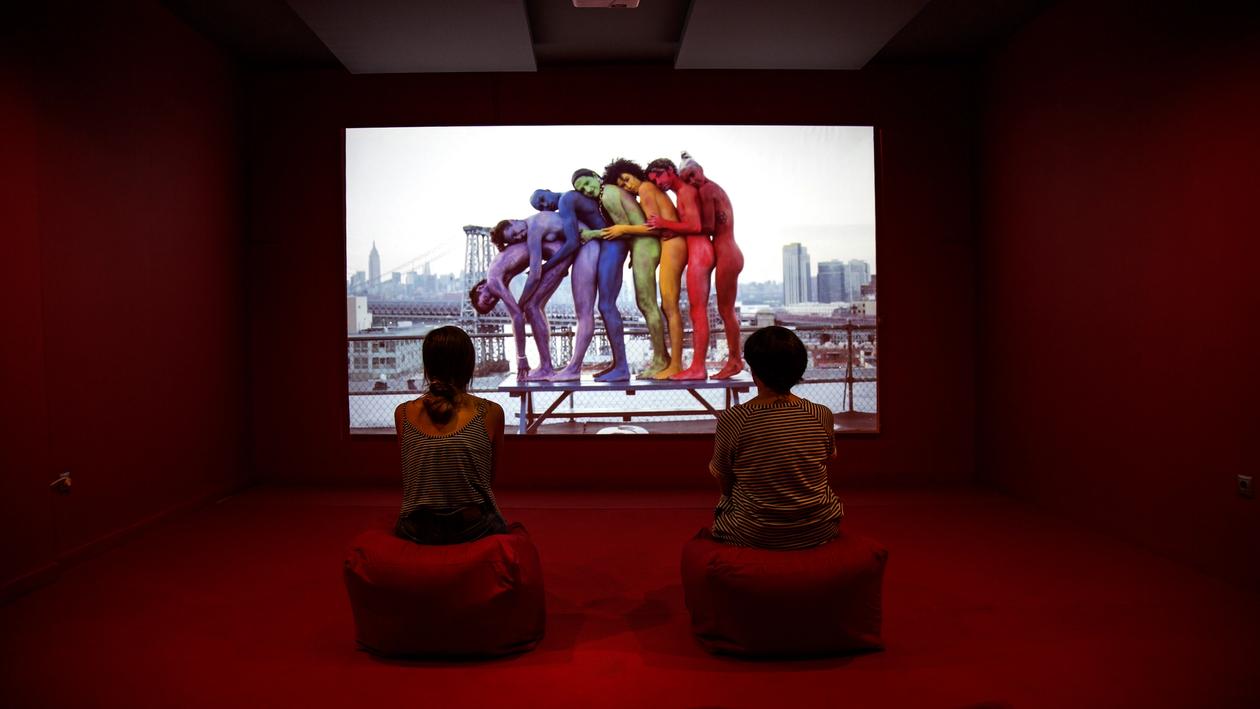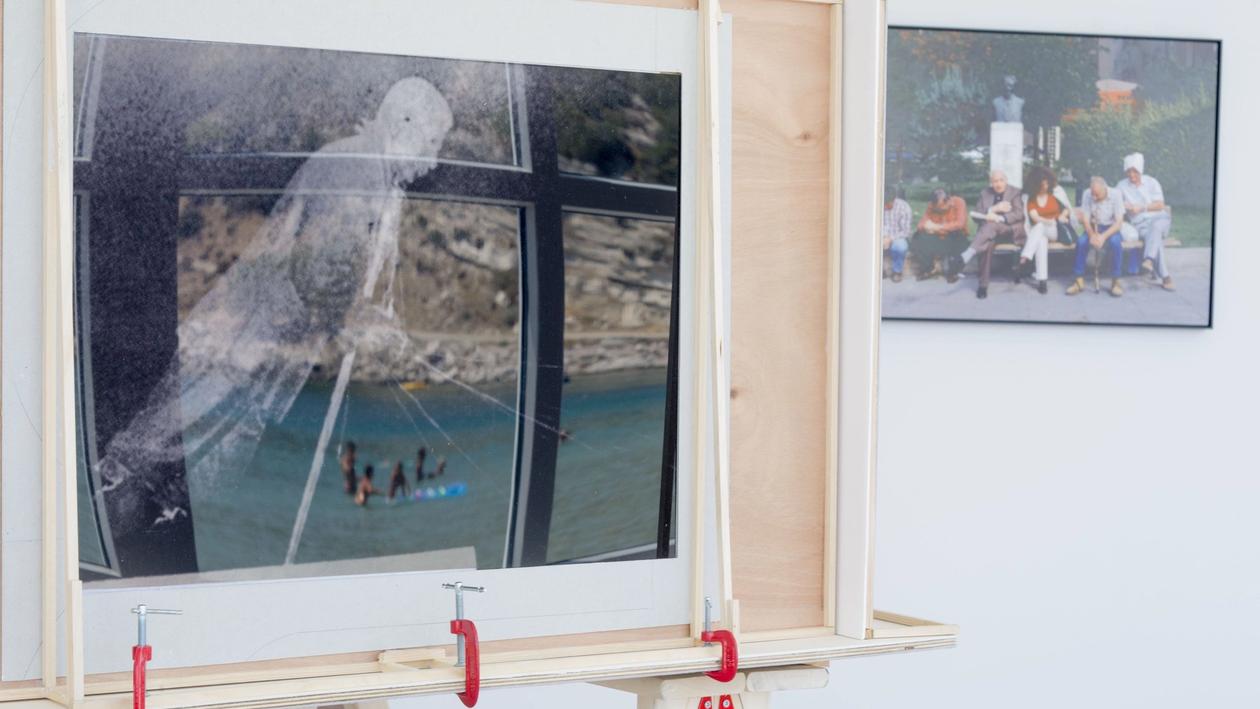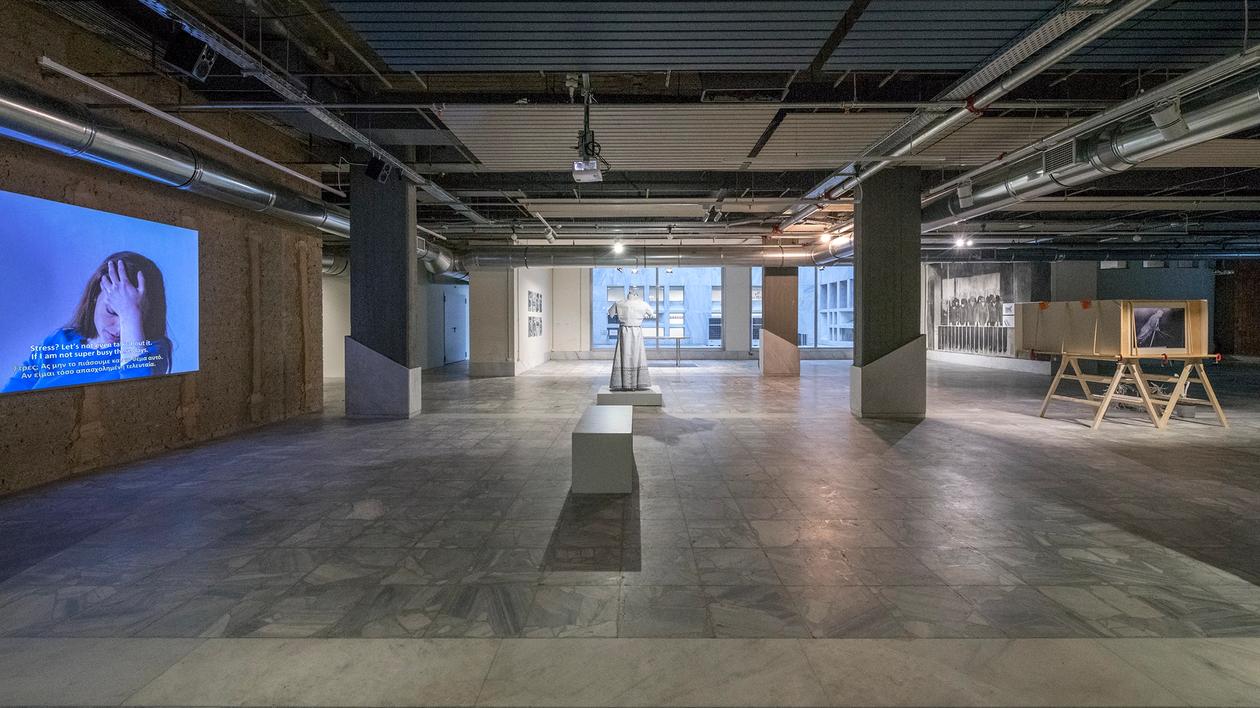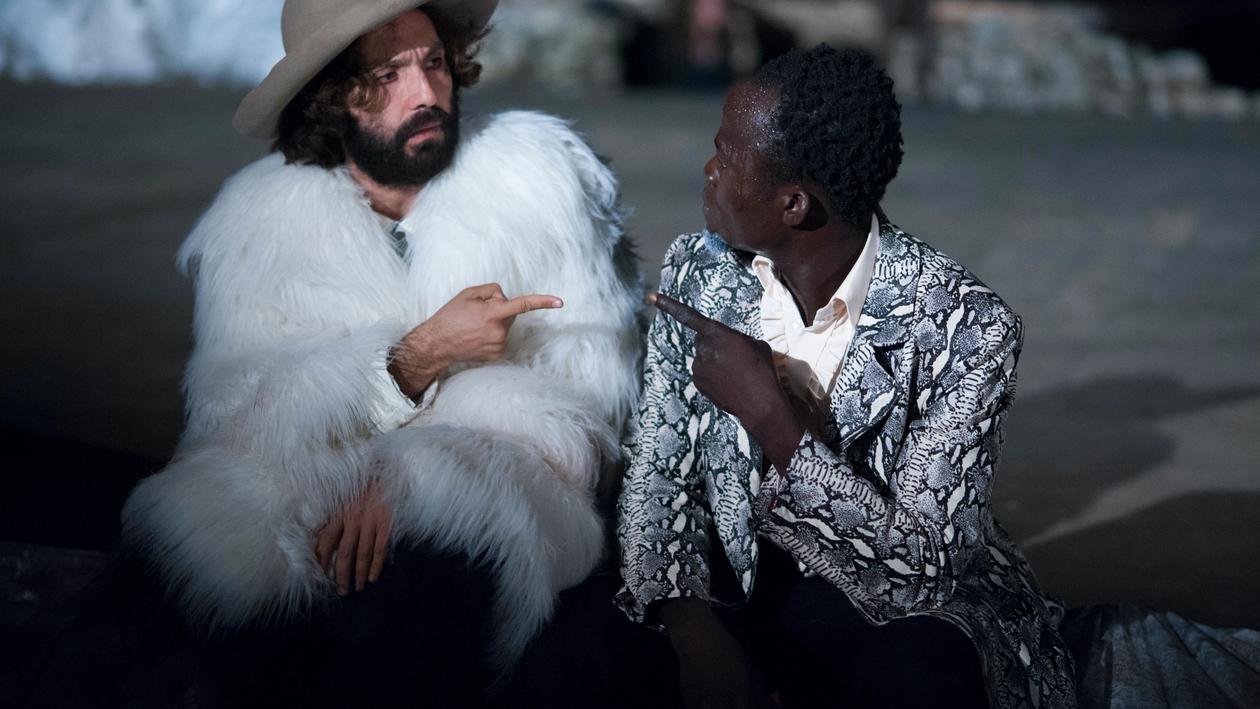
A World Not Ours 2016
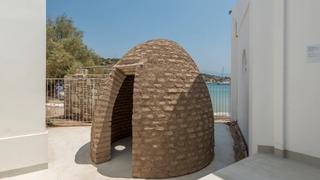

Künstler
Kuratorin
A World Not Ours
Text by Katerina Gregos
A World Not Ours, the summer exhibition for Art Space Pythagorion, Samos, borrows its title from the award-winning homonymous 2012 film by director Mahdi Fleifel, which in turn borrows its name from a book by the Palestinian writer Ghassan Kanafani (1936–72). The film is a portrait of three generations of exile in the refugee camp of Ein el-Helweh, in southern Lebanon, while the book speaks about diaspora and the search for identity. The exhibition takes place in a location which has been at the heart of the refugee crisis that began in 2015, largely as a result of the war in Syria, reflecting on this ongoing crisis. Samos is one of the three Greek islands (together with Lesbos and Kos) closest to the Turkish coast, and as such has been at the crux of this humanitarian tragedy that has been played out on the region’s shores. Given the highly charged location, it is vital that an art exhibition here should address this situation, which has been an unremitting reality on the island, and a pressing, unresolved issue for the whole of Europe. The exhibition focuses on the issue of the refugee crisis and forced migration by bringing together a group of artists, photographers, filmmakers and activists who offer different reactions, reflections, and analyses on the subject. Bringing together diverse practices from installation, performance, photography, film, video and photojournalism, the participants in the exhibition largely transcend one-sided and standardised media representations of the crisis (mostly consisting of rickety boats and images related to the perilous sea crossing) and look into the before and after this dramatic moment. The work on view provides deeper insight into the plight of the refugees, from a humanitarian point of view, acknowledges the complex roots of one of the most pressing issues of our time, while contextualising it into the larger global picture. A key idea underlying the exhibition is also that of engendering empathy — which is perhaps one of the things that can spur us to action. It considers what Susan Sontag has said that we often see pain in images but we cannot feel it. Therefore it aims to make the whole issue more palpable and tangible for the public.
Harnessing methods that range from activism and direct action to poetics and metaphor, the participants in the exhibition consider the issues of forced displacement and the experience of homelessness, perpetual insecurity, diasporic identity and existential limbo. The work that is on view is the result of in-depth, long-term research, on-the-ground engagement and first-hand experience. The works here offer genuine empathy and sincere motivation, as opposed to what Tirdad Zolghadr has been called “poornography”1: the use of images of poverty and precariousness to create sensational images in the media as well as in art. In the contemporary art world, the refugee crisis has unfortunately engendered opportunism, with some rushing in to profess their engagement by producing facile one-liners and generating publicity for their own sake (see endnote). This exhibition, rather, includes artists who opt for a nuanced way of working with these highly sensitive issues, who stay under the radar, working with discretion, thoughtfulness and beneficence. Many of the participants come from the Middle East or south-eastern Europe, from countries that have experienced war, trauma, exodus and perilousness first hand.
- Donnerstag, August 4
Programm
- Samstag, August 6
Künstlergespräche & Filmvorführung
- Tanja BoukalKünstlerin
- Sonntag, August 7
Künstlergespräche Programm
- Ninar EsberKünstlerin
- Marina GiotiKünstlerin
Residency-Programm für junge Kuratoren
Das Residency-Programm für junge Kuratoren ist eine Initiative der Schwarz Foundation, die darauf abzielt, junge Fachleute aus verschiedenen Bereichen der Wissenschaft und Kunst zusammenzubringen. Die Teilnehmer erwerben Berufserfahrung durch die aktive Zusammenarbeit mit international anerkannten Kunstkuratoren. In der inspirierenden Atmosphäre eines historischen und kulturellen Gebiets von großer geografischer Bedeutung arbeiten die Teilnehmer an der Schnittstelle zwischen West und Ost. Die Bewohner treffen sich, interagieren und entwickeln Ideen und Bezüge zu einer großen Gemeinschaft. Die Bewohner beteiligen sich aktiv an der Kuratierung und Produktion der Ausstellung des Art Space Pythagorion unter der Leitung des Kurators. Die Produktion ergänzender Veranstaltungen wie Eröffnungsaktivitäten, Vorträge, Workshops, Bildungsprogramme für Kinder und Filmvorführungen gehören ebenfalls zu ihren Aufgaben.
- Residency-Kuratoren
- Maria-Ioli TzannetakiResidency-Kuratorin
- Faidra VasileiadouResidency-Kuratorin
- Yannis DrakopoulosResidency-Kurator
- Sarita PatnaikResidency-Kuratorin
- Panos GiannikopoulosResidency-Kurator
Bildungsprogramm
Das von der Künstlerin Katerina Zacharopoulou und den Residency-Kuratoren im Rahmen der Ausstellung konzipierte und umgesetzte Bildungsprogramm basiert auf den Arbeiten der teilnehmenden Künstler und berücksichtigt die Neigung der Kinder zum Mitgefühl für den anderen, die besonderen Bedingungen auf der Insel Samos aufgrund der Flüchtlingskrise, die Notwendigkeit der Solidarität und der Anpassung an unsere sich verändernde Welt.
Das Programm richtete sich an Kinder und Jugendliche, aber auch an die Lehrer von Samos mit einer Reihe von kreativen Treffen im Ausstellungsraum. Es machte die Kinder mit einem öffentlichen Kunstraum bekannt und regte Diskussionen über Fotografie, Film, Fotojournalismus, Nachhaltigkeit, die unzähligen Gründe für Migration, Grenzen, Geschichte und Empathie an. Die Veranstaltung dauerte zwei Stunden und wurde von einem speziell gestalteten "Notizbuch" mit Bildern aus der Ausstellung begleitet, in dem die Kinder zeichnen, schreiben und ihre Gefühle ausdrücken konnten. Gleichzeitig wurden sie eingeladen, ihr eigenes imaginäres Haus für die Flüchtlinge zu bauen, eine Geschichte über die Angst und das Fremde zu erzählen, über persönliche Zugehörigkeiten im Zusammenhang mit Familiengeschichten zu sprechen und einen Brief an die teilnehmenden Künstler zu schreiben, in dem sie ihre Erfahrungen mit deren Werken schildern.

Die Ausstellung sollte offiziell am 15. Oktober enden, wurde aber auf Antrag der Schulen von Samos um einen Monat verlängert. Insgesamt haben 887 Schüler in Begleitung ihrer Lehrer an dem Programm teilgenommen.
In Zusammenarbeit mit dem Hohen Kommissar der Vereinten Nationen für Flüchtlinge, der Organisation METADRASI und dem Aufnahme- und Identifizierungsdienst des Ministeriums für Migration und Asyl reisten insgesamt 116 Kinder aus den Flüchtlingseinrichtungen in Vathy Samos (Vathy RIC) an, um "A World Not Ours" zu besuchen. Hauptsächlich arabischsprachige Kinder (Syrien), aber auch Kinder anderer ethnischer Gruppen haben den Art Space Pythagorion in Begleitung ihrer Landsleute, Eltern und Lehrer besucht. Es ist wichtig, den Beitrag von Fachpsychologen und Kinderpsychologen bei der Anpassung und Übersetzung des Lehrbuchs ins Arabische hervorzuheben. Mit Hilfe von Medin Medical Intervention und Médecins Sans Frontières wurden die Erfahrungen der Kinder sorgfältig berücksichtigt.
Kuratorin des Bildungsprogramms
Pressestimmen
- 2016 Art Space Pythagorion Press Review Download
- Anti-utopias, A World Not Ours. Curated by Katerina Gregos (EN)
- Financial Times, Maya Jaggi, A new art show on the frontline of the refugee crisis (EN)
- artnet news, Hili Perlson (Review), On Samos, Greece, a Show Takes an Intimate Look at the Refugee Crisis (EN)
- Monopol, Donna Schons, Die schwindende Macht der Bilder (DE)
- Die Welt, Anne Waak, Ferien für immer (DE)
- FAZ - Frankfurter Allgemeine Zeitung, Kolja Reichert, Die Kunst der guten Absichten (DE)
- Tagesspiegel, Bernhard Schulz, Auch Griechen flüchteten nach Samos (DE)
- Kathimerini, Margarita Pournara, Κοιτάζοντας κατάματα την αλήθεια (GR)
- ελculture, Argyro Bozoni, Το Πυθαγόρειο της Σάμου έχει ένα λόγο να υπερηφανεύεται (GR)
- ελculture, Argyro Bozoni, Eκπαιδευτικό Πρόγραμμα στο πλαίσιο της έκθεσης "A World Not Ours" (GR)
- ελculture, Argyro Bozoni,«Πιστεύω ότι αν η τέχνη διδασκότανε στα σχολεία, θα ήμασταν ίσως πιο πολιτισμένοι και λίγο καλύτεροι άνθρωποι» (GR)
- EfSyn, Paris Spinos, Καλλιτέχνες χωρίς σύνορα για το προσφυγικό (GR)
- To Vima, Marilena Astrapellou, Η Σάμος δείχνει τον δρόμο (GR)
Ausstellungsbroschüre
Credits
- Ausstellungskonzept/Kuratorin: Katerina Gregos; Kuratorische Assistenz: Sarita Patnaik; Produktion/Installation: Yorgos Efstathoulidis/Konstruktivist; Supervisor: Danae Giamalaki; Ausstellungsarchitektin: Penny Petrakou; Audio-visuell: M-SPIRIT ΜΟΝ. / Kostas Perifanos; Filmproduktion / Regie: Theo Prodromidis; Internationale Medienarbeit: Goldmann Public Relations, München; Griechische Medienarbeit: Zuma Communications, Athen; Bildungsprogramm: Katerina Zacharopoulou; Residency-Kuratoren: Giannis Drakopoulos, Panos Giannikopoulos, Ioli Tzanetaki, Sarita Patnaik, Faidra Vasileiadou; Assistenten: Vassilis Pristouris, Despina Tsirigou, Evagelia Vakiarou, Eleni Maria Loulourga; Grafikdesign: Daniel Schnitterbaum; Druck: image, Samos; Übersetzungen: Tony Moser (Englisch-Griechisch); Lektorat: Tony Moser
Dank an die Fondation Cartier, Paris, für die Ausleihe des Werks EXIT

Besonderer Dank
- der Gemeinde Samos, dem Städtischen Hafenfonds von Samos, der Hafenbehörde von Pythagorion
Mediensponsoren


